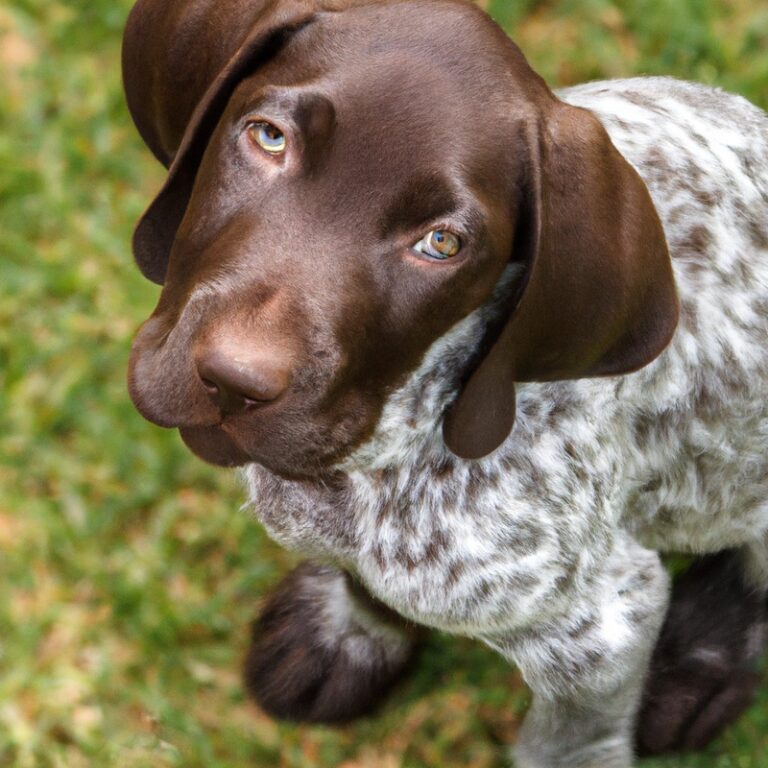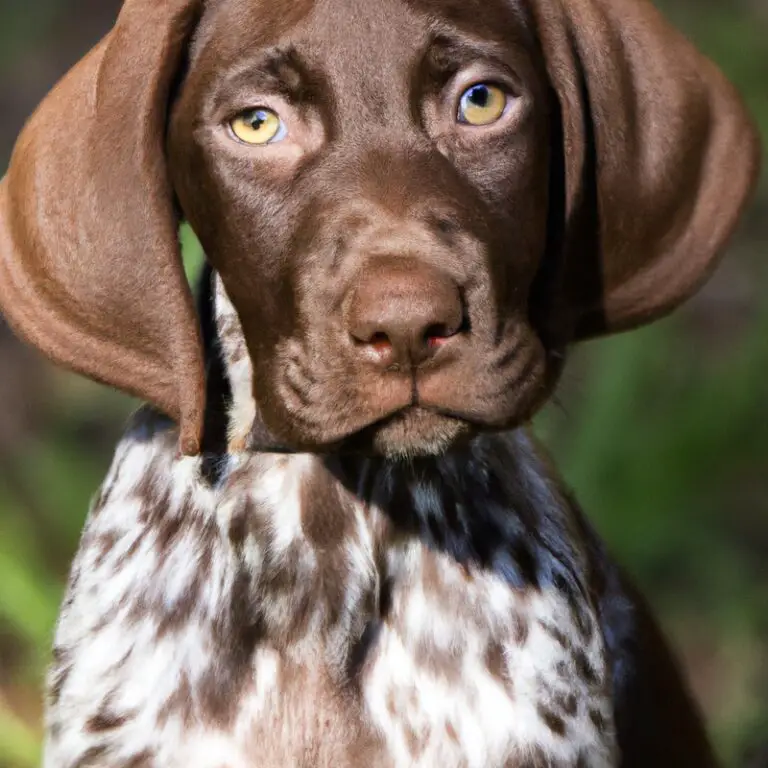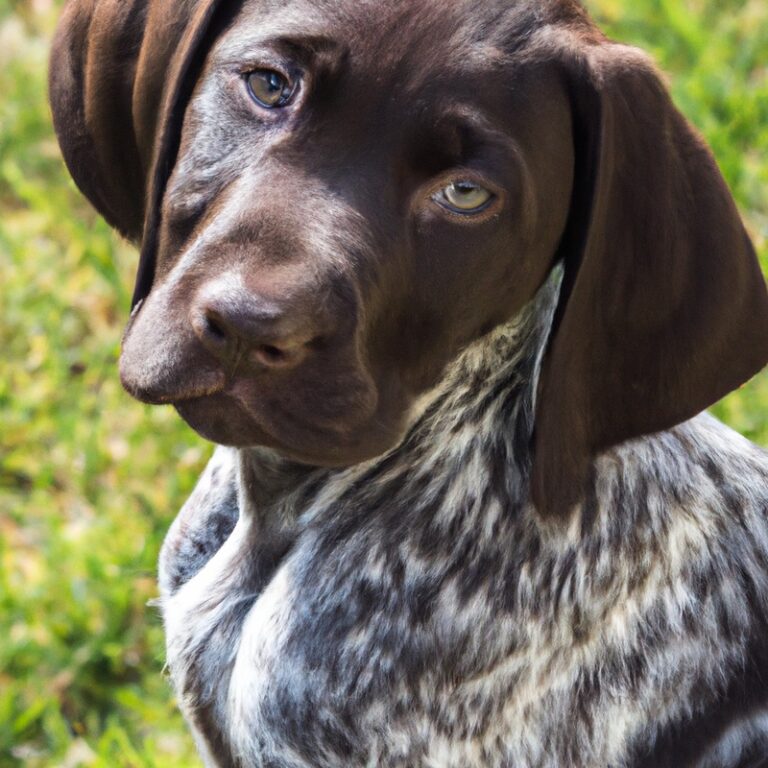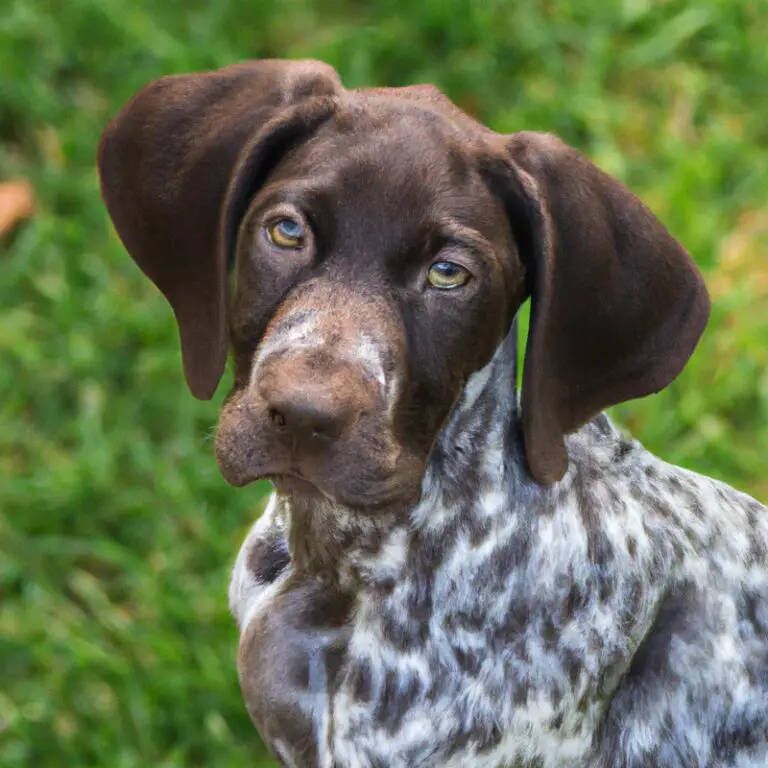How Can I Prevent My German Shorthaired Pointer From Developing Separation Anxiety?
Key Takeaways:
- Establish a consistent routine and gradually introduce periods of alone time.
- Provide ample physical and mental stimulation to keep your German Shorthaired Pointer engaged.
- Use positive reinforcement techniques to reward calm behavior and desensitize them to departure cues.
- Consider seeking professional help or using anti-anxiety interventions if separation anxiety persists.
Are you concerned about your furry friend suffering from separation anxiety when you’re away? Well, you’re not alone! As an expert in dog behavior, I understand the deep bond we form with our German Shorthaired Pointers (GSPs), and the anxiety they can experience when left alone.
In this article, I’ll guide you through the ins and outs of separation anxiety in GSPs, including why it happens and how to recognize the signs.
I’ll also share top tips and techniques for preventing separation anxiety, ensuring your GSP stays happy and content even when you’re not by their side. So, let’s dive in and provide the best care for your beloved GSP!
| Suggestions | |
|---|---|
| 1. | Start with short separations and gradually increase |
| 2. | Provide mental and physical stimulation before leaving |
| 3. | Create a safe and secure environment (crate, designated area) |
| 4. | Use calming aids (thunder shirt, pheromone diffuser) |
| 5. | Practice desensitization training exercises |
| 6. | Seek professional help if needed |
Understanding Separation Anxiety in German Shorthaired Pointers
What is separation anxiety in dogs?
Separation anxiety in dogs is a condition where a dog experiences excessive fear, stress, and distress when separated from its owner or from other individuals they are attached to. It’s more than just missing you.
Dogs with separation anxiety can exhibit various behaviors such as excessive barking, destructive chewing, urinating or defecating inside the house, pacing, and attempting to escape.
This anxiety can make leaving your dog alone for even short periods of time very challenging. Understanding separation anxiety is essential for addressing and managing this issue effectively.
Why do German Shorthaired Pointers develop separation anxiety?
German Shorthaired Pointers are known for their strong loyalty and bonded nature with their owners. This loyalty can sometimes lead to separation anxiety when they are left alone.
So why do they develop this anxiety?
One reason is their sensitive and emotional nature. They form deep attachments with their owners and become distressed when they are separated.
Their high energy levels and need for mental and physical stimulation also contribute to their anxiety when left alone for long periods.
Another factor is their history as hunting dogs. They are bred to work closely with humans, which makes them highly dependent on their presence.
When they don’t have a job or task to occupy their minds, they may become anxious and exhibit destructive behaviors.
Furthermore, certain life experiences can also contribute to separation anxiety in German Shorthaired Pointers. Traumatic events, changes in routine, or being rehomed can trigger this anxiety.
Understanding why German Shorthaired Pointers develop separation anxiety can help owners take preventive measures to alleviate this issue.
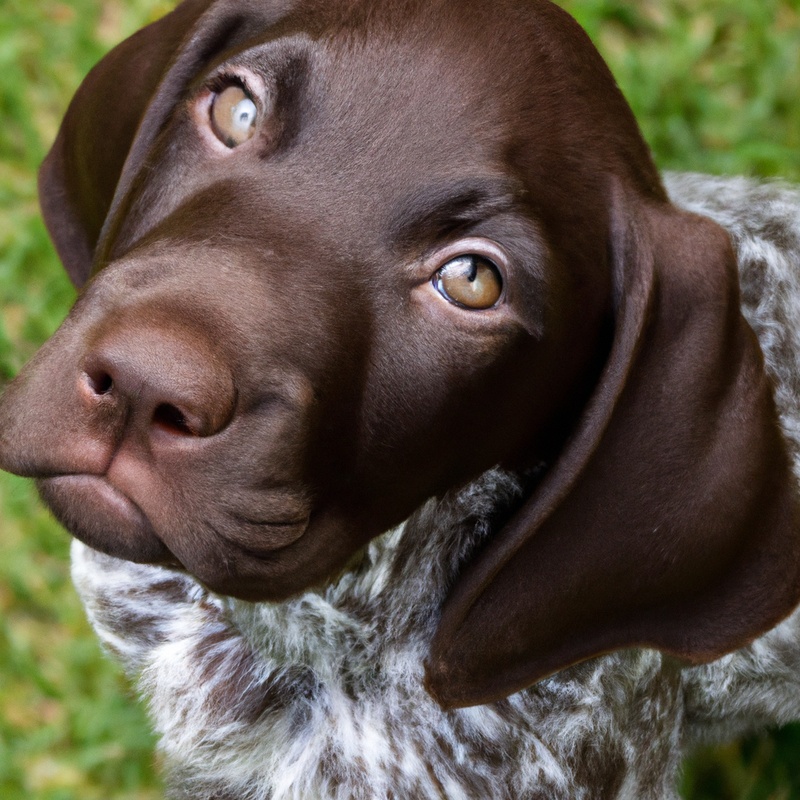
Recognizing the signs of separation anxiety in your dog
Recognizing the signs of separation anxiety in your dog is important to address the issue early on. Here are some common signs to watch for:
- Destructive behavior: If your dog chews furniture, digs holes, or destroys things when left alone, it could be a sign of separation anxiety.
- Excessive barking or howling: Dogs with separation anxiety might bark or howl excessively when left alone. This is their way of expressing distress and trying to get your attention.
- Potty accidents indoors: Dogs who are house trained may start having accidents when suffering from separation anxiety. This is often due to stress and anxiety.
- Escaping or attempting to escape: Some dogs with separation anxiety may try to escape from their environment by scratching doors or windows, or even jumping fences.
- Pacing or restlessness: A dog with separation anxiety may exhibit signs of restlessness by pacing back and forth, unable to settle down.
- Excessive drooling or panting: If your dog drools excessively or pants heavily when left alone, it could be a sign of anxiety.
If you notice these signs in your dog, it’s important to address the separation anxiety to improve their well-being. Consult with a professional trainer or behaviorist who can help you develop a personalized plan to minimize your dog’s anxiety when alone.
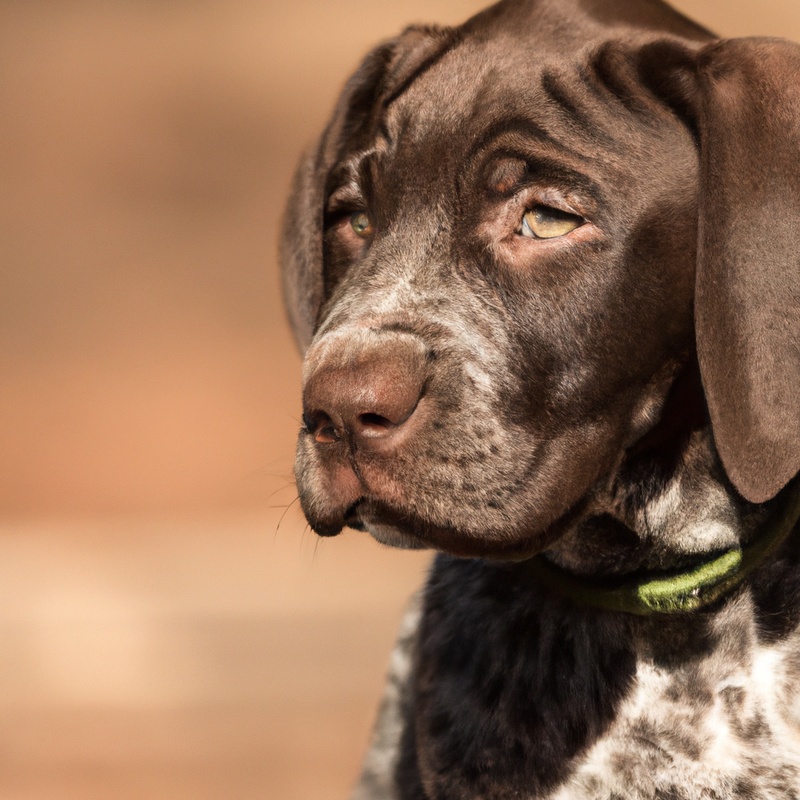
Tips for Preventing Separation Anxiety in German Shorthaired Pointers
Gradual desensitization and counterconditioning techniques
When it comes to preventing separation anxiety in your German Shorthaired Pointer, gradual desensitization and counterconditioning techniques can be really helpful. These techniques involve gradually exposing your dog to being alone and pairing it with positive experiences.
Here’s how it works:
- Start by leaving your dog alone for short periods of time and gradually increase the duration as they become more comfortable.
- Make sure to provide your dog with engaging toys or treats to keep them occupied while you’re away.
- Additionally, you can create a positive association with your departure by leaving treats or toys that your dog loves.
- Another technique is to practice “fake departures” where you go through the motions of leaving but don’t actually leave, to help desensitize your dog to the cues of your departure.
By incorporating gradual desensitization and counterconditioning techniques into your routine, you can help your German Shorthaired Pointer feel more secure and confident when you’re not around.
Creating a safe and comfortable environment for your dog
Creating a safe and comfortable environment for your dog is essential in preventing separation anxiety. First and foremost, make sure your dog has a designated space that they can call their own.
This can be a crate, a bed, or a specific room in your house.
Fill this space with cozy bedding, toys, and familiar scents to provide a sense of security. Additionally, establish a consistent daily routine for your dog.
Dogs thrive on predictability, so try to feed them, walk them, and play with them at the same times each day.
This routine will help your dog feel more secure and less anxious when you are not around. Another important aspect is to gradually accustom your dog to your departures.
Start by leaving for short periods of time and gradually increase the duration.
This will help your dog develop confidence and trust that you will always return. Lastly, consider providing mental and physical stimulation for your dog when you are away.
Puzzle toys, interactive feeders, and long-lasting chews can help keep your dog occupied and alleviate boredom.

Maintaining a consistent routine
Maintaining a consistent routine is key when it comes to preventing separation anxiety in German Shorthaired Pointers. Dogs thrive on structure and predictability, and having a set schedule can help them feel more secure when alone.
First and foremost, establish a regular daily routine for your dog.
This includes feeding times, exercise sessions, and potty breaks. Stick to these times as closely as possible, even on weekends or days off.
Create a pre-departure routine that signals to your dog that you’re leaving.
This could be as simple as grabbing your keys or putting on your shoes. By consistently following this routine, your dog will start to associate it with your temporary absence.
It’s also important to gradually increase the amount of time your dog spends alone.
Start with short periods and gradually extend the duration. This helps your dog build confidence and reduces anxiety.
Consider incorporating interactive toys or treat-dispensing puzzles into your dog’s routine.
These can provide mental stimulation and keep your dog occupied while you’re away.
Using interactive toys and puzzles to keep them engaged
Using interactive toys and puzzles is a great way to keep your German Shorthaired Pointer engaged and prevent separation anxiety. These toys provide mental stimulation and entertainment when you’re not around.
Look for toys that challenge their problem-solving skills, such as treat-dispensing puzzle toys or ones that require them to manipulate parts to access treats.
Toys that make noise or have different textures can also keep them interested. Remember to rotate the toys regularly to maintain their interest and keep things exciting.
Establishing a positive association with being alone
Establishing a positive association with being alone is key to preventing separation anxiety in German Shorthaired Pointers. One way to do this is by gradually increasing the time your dog spends alone, starting with short intervals and gradually lengthening them.
Make sure your dog has plenty of engaging toys, treats, and activities to keep them occupied while you’re away.
Reward your dog for calm behavior when alone and avoid making a big fuss when you leave or return. Creating a calm and predictable environment will help your dog feel more comfortable being alone.
Considering professional help if needed
If you’re struggling to address your German Shorthaired Pointer’s separation anxiety on your own, don’t hesitate to seek professional help. Sometimes, a trained expert can provide valuable guidance and support, tailoring a specific plan to address your dog’s needs.
A professional dog trainer or animal behaviorist can assess the situation, identify triggers, and create a customized treatment plan to alleviate your dog’s separation anxiety.
Exercise and Mental Stimulation for German Shorthaired Pointers
Importance of regular exercise for preventing separation anxiety
Regular exercise plays a crucial role in preventing separation anxiety in German Shorthaired Pointers. When these energetic dogs don’t get enough physical activity, it can lead to pent-up energy and stress.
By making sure they get enough exercise, you can help them release that energy and keep them mentally stimulated, which in turn reduces the risk of separation anxiety.
So, remember to prioritize regular exercise for your German Shorthaired Pointer to keep them happy, healthy, and anxiety-free.
Different types of physical activities suitable for GSPs
German Shorthaired Pointers (GSPs) are energetic and active dogs that require regular physical exercise to stay healthy and happy. Here are some types of physical activities that are suitable for GSPs:
- Long walks: Taking your GSP for long walks is a great way to provide them with exercise and mental stimulation. They love exploring the outdoors and will enjoy sniffing around and investigating their surroundings.
- Jogging or running: GSPs have a lot of energy to burn, and jogging or running is an excellent way to help them release it. They make great running partners and will keep up with you for miles.
- Fetch: GSPs have a strong retrieving instinct, so playing fetch can be a fun and engaging activity for them. You can throw a ball or a frisbee for them to chase and bring back, providing both physical and mental exercise.
- Swimming: Many GSPs love swimming, so if you have access to a safe and secure outdoor area with water, consider letting them take a dip. Swimming is a low-impact exercise that can help keep their joints healthy.
- Agility training: GSPs are intelligent and highly trainable dogs. Engaging them in agility training can provide both physical and mental exercise. Set up an agility course in your backyard or join a local training club.
Mental stimulation exercises and games
Mental stimulation exercises and games are essential for keeping your German Shorthaired Pointer happy and engaged. These activities help prevent boredom and can even help prevent separation anxiety.
Here are some ideas to get you started:
- Puzzle toys: Invest in interactive toys that require your dog to problem solve to get a treat or reward. This keeps their mind active and entertained.
- Hide and seek: Play a game of hide and seek with your dog’s favorite toys or treats. This engages their senses and requires them to use their nose to find the hidden item.
- Training sessions: Regular training sessions not only strengthen your bond with your dog but also provide mental stimulation. Teach them new tricks or practice obedience commands to challenge their mind.
- Scent work: German Shorthaired Pointers have an excellent sense of smell. Set up scenting games where they have to locate certain scents hidden around the house or yard.
- Interactive play: Engage your dog in interactive play sessions using toys that make noises or move unpredictably. This keeps them mentally engaged and provides physical exercise as well.
Incorporating interactive toys and puzzles in their routine
Incorporating interactive toys and puzzles into your German Shorthaired Pointer’s routine can be a great way to prevent separation anxiety. These toys and puzzles provide mental stimulation and keep your dog occupied, reducing their anxiety when alone.
One option is treat-dispensing toys, where your dog has to work to get their treats out.
Puzzle toys that require problem-solving skills can also keep your pup engaged and entertained. Don’t forget to rotate the toys regularly to keep things interesting.
Training Techniques to Prevent Separation Anxiety in GSPs
Teaching your dog to stay calm and relaxed when alone
Teaching your dog to stay calm and relaxed when alone is essential in preventing separation anxiety. First and foremost, make sure to gradually introduce alone time to your dog.
Start with short periods and gradually increase the duration over time.
Additionally, create a comfortable and secure space for your dog when they are left alone. Provide them with engaging toys and puzzles to keep them occupied.
Another important tip is to establish a consistent routine to help your dog feel secure and understand when alone time is expected.
Finally, reward your dog for calm behavior when alone to reinforce positive associations with being by themselves.
Gradually increasing alone time
Gradually increasing alone time is a key strategy to prevent separation anxiety in German Shorthaired Pointers (GSPs). Instead of suddenly leaving your GSP alone for long periods, start by leaving for short durations and gradually increase the time.
This helps your dog become comfortable with being alone and builds their confidence.
Begin with just a few minutes and then gradually extend it over several weeks. Make sure to provide them with engaging toys, treats, and a comfortable space during this alone time.
Positive reinforcement and rewards for good behavior
Positive reinforcement and rewards are essential tools for preventing separation anxiety in German Shorthaired Pointers (GSPs). Instead of punishing your dog for exhibiting anxious behavior, focus on rewarding their calm and relaxed behavior.
When your GSP remains calm during periods of separation, praise and reward them with treats or toys.
Positive reinforcement helps them associate being alone with positive experiences. It’s important to consistently reinforce good behavior to strengthen the bond between you and your GSP and alleviate their separation anxiety.
Consistency and patience in training
Consistency and patience are key when it comes to training your German Shorthaired Pointer (GSP) and preventing separation anxiety. First and foremost, establish a routine and stick to it.
Dogs thrive on predictability, so a consistent schedule for feeding, exercise, and alone time can help your GSP feel secure.
Make sure to gradually increase the amount of time your dog spends alone to help them adjust. During training sessions, be patient and give your GSP time to understand and learn.
Avoid getting frustrated or rushing the process.
Positive reinforcement, such as treats and praise, is effective in reinforcing desired behaviors and building a strong bond with your dog.
Seeking professional help if training efforts are unsuccessful
If you’ve been diligently working on training your German Shorthaired Pointer to prevent separation anxiety but haven’t seen any improvement, it may be time to seek professional help. Sometimes, despite our best efforts, we need the expertise of a professional dog trainer or behaviorist to address the underlying issues causing the separation anxiety.
They can assess the situation, develop a personalized training plan, and provide guidance on techniques that may be more effective for your specific dog.
Don’t hesitate to reach out for help if your training efforts haven’t been successful – there are professionals available who can support you and your pup.
Avoiding Common Mistakes in Preventing Separation Anxiety
Avoiding punishment or scolding when your GSP exhibits anxiety
Avoiding punishment or scolding when your German Shorthaired Pointer (GSP) exhibits anxiety is crucial. Your GSP’s anxiety is not a result of disobedience or intentional misbehavior.
Punishing or scolding them will only worsen their anxiety and potentially damage your bond with them.
Instead, try understanding the root cause of their anxiety and address it with positive reinforcement techniques. Be patient, provide them with a safe and comforting environment, and consider seeking professional help if needed.
Not leaving your dog alone for extended periods
Leaving your dog alone for long periods of time can contribute to the development of separation anxiety. Dogs are social animals and thrive on companionship and interaction.
When they are left alone for extended periods, they can become anxious, stressed, and even depressed.
One of the most effective ways to prevent separation anxiety is to avoid leaving your dog alone for long stretches of time. Make sure your dog has plenty of opportunities for social interaction, both with you and with other dogs.
This can include playdates, walks, and trips to the dog park.
If you do need to be away for an extended period, consider hiring a dog walker or pet sitter to spend time with your dog and provide companionship. Another option is to enroll your dog in doggy daycare, where they can engage in supervised play and socialize with other dogs.
Avoiding sudden changes in routine or environment
One important thing to remember to prevent separation anxiety in your German Shorthaired Pointer is to avoid making sudden changes in their routine or environment. Dogs thrive on consistency and structure, so sudden changes can cause them stress and anxiety.
This includes sudden changes in their daily schedule, such as feeding or walking times, as well as changes in their living environment.
Try to maintain a stable routine and gradually introduce any changes to minimize the chances of your dog developing separation anxiety.
Not reinforcing anxious behaviors
Not reinforcing anxious behaviors is key when it comes to preventing separation anxiety in your German Shorthaired Pointer. First and foremost, avoid making a fuss or giving excessive attention when you leave or return home.
This can actually reinforce your dog’s anxiety by making them think that your departures and arrivals are a big deal.
Instead, try to establish a calm and predictable routine. Another important aspect is gradually increasing the time that you spend away from your dog, allowing them to get used to being alone in a gradual and positive way.
Reward calm behavior when you leave and return, and provide engaging toys or puzzles to keep your dog occupied during your absence.
Final Verdict
Preventing separation anxiety in German Shorthaired Pointers requires a proactive approach and understanding of their needs. By gradually desensitizing your dog to being alone, creating a comfortable environment, maintaining a consistent routine, and providing mental and physical stimulation, you can minimize the risk of separation anxiety.
Incorporating positive reinforcement training techniques and avoiding common mistakes such as punishment or leaving them alone for extended periods are also important.
Remember, seeking professional help if needed can provide invaluable guidance. By implementing these strategies, you can establish a strong bond with your German Shorthaired Pointer and ensure their well-being, ultimately preventing separation anxiety.
Trust in these recommendations, derived from my expertise and experience with these remarkable dogs.


